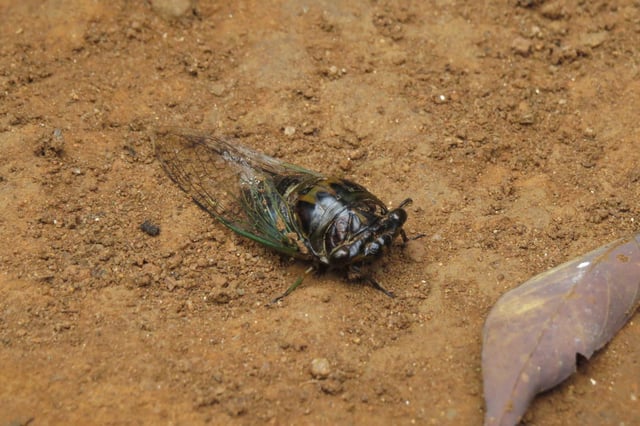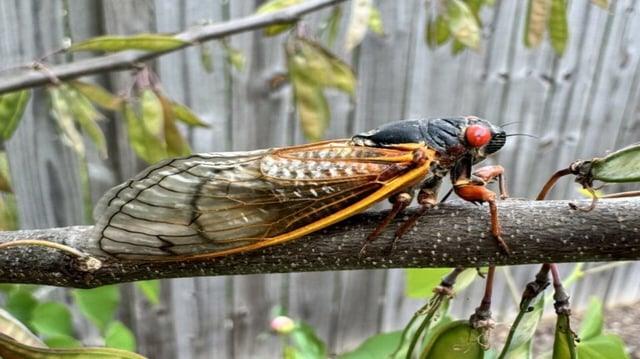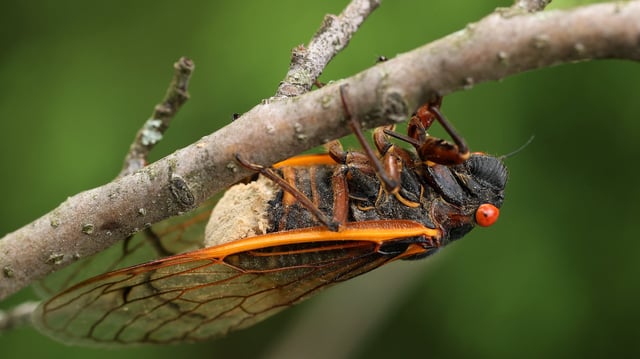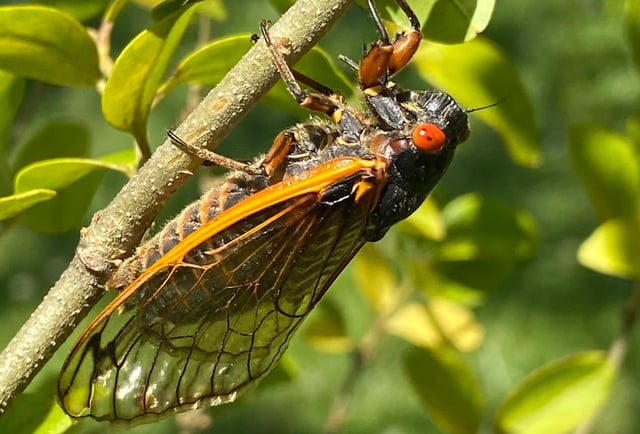Overview
- Brood XIV cicadas, last seen in 2008, are emerging in billions across the eastern United States, marking the start of their 17-year cycle above ground.
- The emergence is triggered by soil temperatures reaching 64°F, with populations already surfacing in northern Georgia and poised to spread across their range through June.
- These cicadas overwhelm predators through sheer numbers, boosting food webs, enriching soil with their decomposing bodies, and aerating the ground.
- Scientists and citizen scientists are using tools like the Cicada Safari app to map cicada populations and study their ecological impacts, including the effects of climate change on their cycles.
- Some cicadas are falling victim to a parasitic fungus, Massospora cicadina, which alters their behavior and could influence population dynamics.



